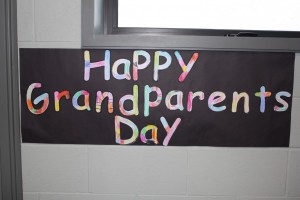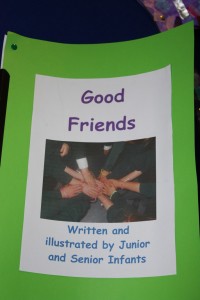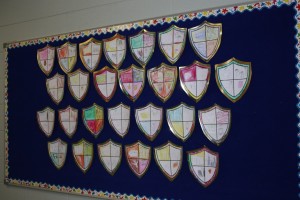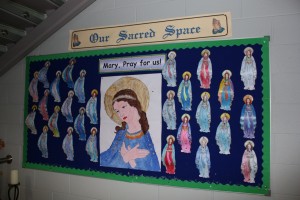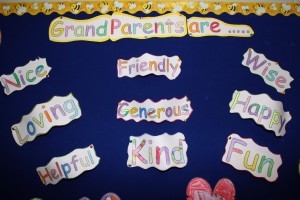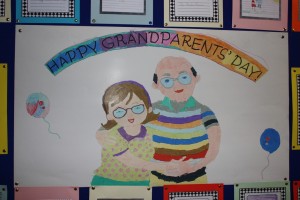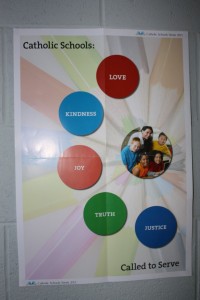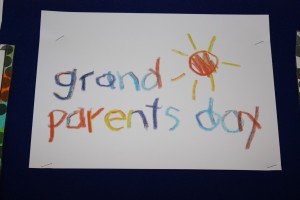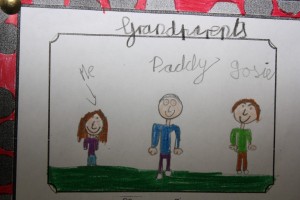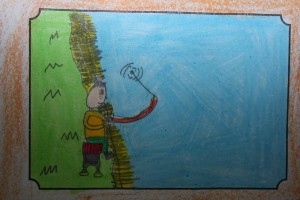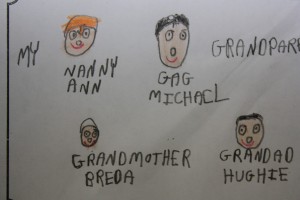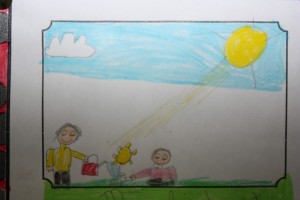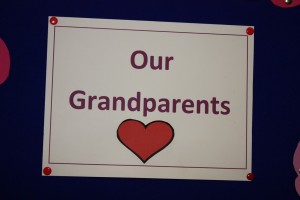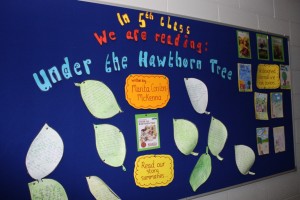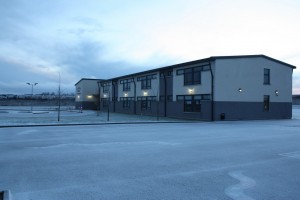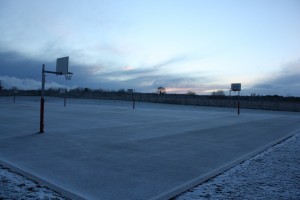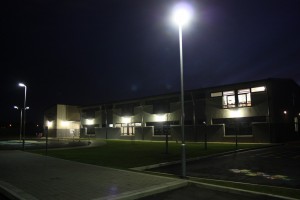St. Patrick’s N.S. is a co-educational primary school under the patronage of the Bishop of Kildare and Leighlin. The school strives to create a learning environment where every child is encouraged and enabled to develop to their full potential as human beings, made in the image and likeness of God.
There are 13 full time teachers, including Administrative Principal, 3 resource/learning support teachers and 1 part-time resource teacher. There are also 2 special needs assistants on the staff. The school caters for the full range of classes from Junior Infants to Sixth class.
Children enrolled in St. Patrick’s N.S. are required to co-operate with and support the school’s Code of Behaviour as well as all other policies. Parents/Guardians are responsible for ensuring that their child(ren) co-operate with these policies in an age-appropriate way. A copy of the Code of Behaviour will be available to all parents and each parent will be requested to give an undertaking to uphold the School Code of Behaviour and Policy.
St. Patrick’s N.S. operates under the Rules for National Schools and Departmental Circulars and is funded by grants and teachers resourced by the Department of Education and Science. The school is subject to the Education Act (1998), The Education Welfare Act (2000), The Education for Persons with Special Education Needs Act (2004) and all relevant equality legislation. St. Patrick’s N.S. follows the curricular programmes laid down by the Department of Education and Science.
Application Procedures:
The Board of Management will communicate generally to the school community through appropriate channels, e.g., newsletter, parish bulletin, parents letters and school website to outline the application for enrolment procedures.
Parents can provide their child’s (children’s) details at any point and the names (dated) will be kept on file until the January of the year of enrolment. Forms will be issued to these parents to be completed and returned to the school by late January early February. Parents will be informed within 21 days if places are available. Parents of children enrolled in Junior Infants will be invited to a ‘parents’ day in June each year followed by an orientation afternoon for the new junior infants.
No child is refused admission for reasons of ethnicity, special educational needs, disability, language/accent, gender, traveller status, asylum-seeker/refugee status, religious/political beliefs and values, family or social circumstances.
While recognizing the rights of the parents to enrol their child in the school of their choice, the Board of Management is also responsible to respect the rights of the existing school community and in particular, the children already enrolled. This requires balanced judgements which are guided by the principles of natural justice and acting in the best interest of all the children.
The completion of an application form or the placement of your child’s name on a list, however early, does not confer an automatic right to a place in the school.
Decision Making
Decisions in relation to application for enrolment are made by the Board of Management. Parents will be notified of acceptance of their children and as a general principle, children will be enrolled on application provided that there is space available and the child has reached his/her 4th birthday though compulsory attendance does not apply until the child is six years of age.
To assist the school in such circumstances of excessive demand, the Board of Management reserves the right to determine the maximum number of children in each separate classroom bearing in mind Department of Education and Science guidelines in relation to class size and staffing provisions.
Other factors that may be considered are:
* Size of and available space in classrooms.
* Educational needs of children of a particular age.
* Multi-grade classes.
* Presence of children with special educational/behavioural needs.
In the event of the number of children seeking enrolment in any given class/standard exceeding the number of places available the following criteria will be used to prioritise children for enrolment:
A. Brothers and sisters (step-siblings, resident at same address) of children enrolled with priority going to be oldest.
B. Children living within the parish – priority oldest.
C. Children of current school staff – priority oldest.
D. Children whose home address is closest to the school if the child is normally resident outside of the parish/agreed catchment area.
E. In the event of being unable to enrol a child(ren) from categories A. B, C in a given class at the beginning of the year, or mid-term, such children will receive priority (in order of A, B, C) for the subsequent school year over other children on the class waiting list.
Other pupils may be enrolled during the school year if newly resident in the area. Pupils wishing to transfer from other schools are enrolled subject to the Rules for National Schools, Education Welfare Act and school’s enrolment policy.
Children with Special Needs
Children with special needs enrolling in St. Patrick’s National School will be resourced in accordance with level of resources by the Department of Education and Science to the Board of Management.
The Board of Management may request a copy of the child’s medical and/or psychological report or request that the child be assessed immediately in order to assist the school in establishing the educational needs of the child and to profile the support services required. The Board of Management will endeavour to have all resources and support in place before the child is admitted to the school. This may include visiting teacher service, resource teacher, special needs assistants, etc., specialized equipment or furniture, transport services, etc.
The school will meet with the parents of the special needs child to discuss the school’s suitability for the child. If necessary a full case conference may be called including parents, class teacher, learning support teacher, resource teacher and psychologist or social workers as appropriate.
Notwithstanding the availability of such resources, parents of children who are dissatisfied with the level of educational provision in our school are advised to consider a special school, which is designed and resourced to specifically cater for the needs of children with special educational needs.
Appeals Procedure
Parents who are unhappy with an enrolment decision, may appeal to the Board of Management. It must be addressed, in writing, to the Chairperson of the Board, stating the grounds for the appeal, and lodged within ten days of receiving the refusal. Parents, if unhappy with the result of this appeal, may appeal to the Department of Education and Science under Section 29 of the Education Act on the official form provided by the Department. This appeal must be lodged within 42 days of receipt of the refusal from the school to enrol.
The policy will be reviewed regularly in the light of experience. Any member of the school community can request a review and such a request will be dealt with as quickly as possible.
Ratified by Board of Management on ________________
Signed _______________________________________
Chairperson, Board of Management

